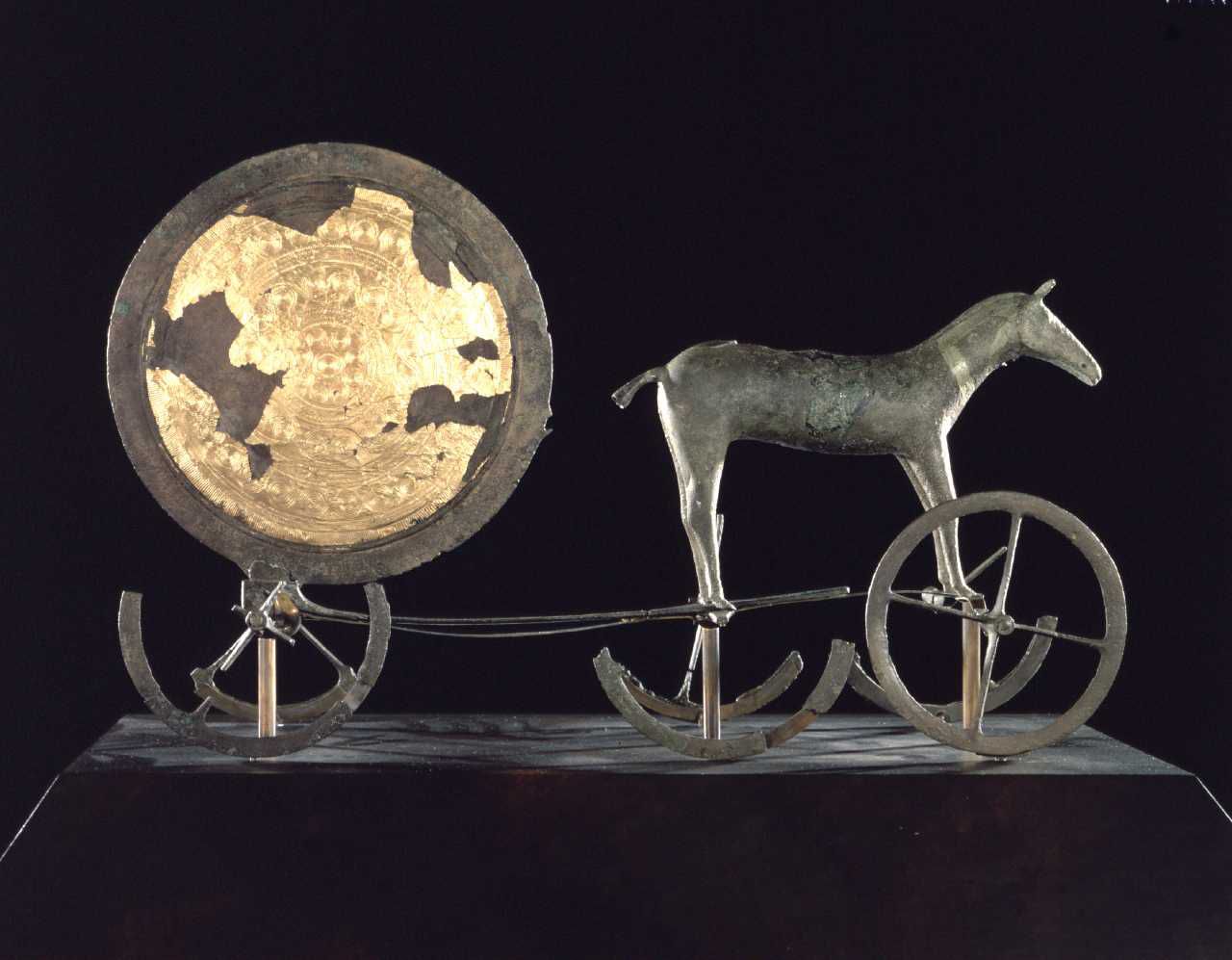SunSHINE – The Sun-chariot’s Journey Towards the Nordic Sky
SunSHINE – The Sun-chariot’s Journey Towards the Nordic Sky: on the (Pre-)History of Ideas on Sky, Sun, and Sunlight in Northern Europe (2020-2021) was a research project conducted at the Roots of Europe research center by Riccardo Ginevra and funded by the EU Marie-Skłodowska-Curie programme.
Thanks to the fruitful collaboration between scholars of Linguistics, Archaeology, and Genomics, we now know beyond any doubt that Proto-Indo-European, the common ancestor of most Indo-European languages (perhaps excluding Hittite and its closest relatives), was spoken more than 5000 years ago in the Pontic-Caspian steppesteppe by groups of pastoralists, some of which at some point started migrating west to Central, Northern, and Southern Europe, where they came into contact with pre-existing Neolithic populations practicing agriculture, leading to the development of several Central and Northern European Bronze Age archaeological cultures.
These prehistoric cultures are connected to several archaeological objects that point to complex religious and cosmological conceptions of the sun and the sky, such as the Trundholm Sun chariot (see figure), a beautifully wrought Bronze Age artefact kept at the National Museum of Denmark in Copenhagen, which consists of a small model of a horse pulling a wheel decorated with gold, clearly representing the sun.

Specialists of Historical-Comparative Linguistics have been able to reconstruct not only an impressive amount of elements of the Proto-Indo-European lexicon, but also of formulaic expressions and other fixed combinations of words and meanings (such as the name of the supreme deity, *di̯éu̯‑ ph2tér‑ “Father Sky”, or the kenning “*kʷekʷló- ‘wheel’ of the *séh₂ul- ‘sun’”), which are the subject of study of the field of Comparative Indo-European Poetics. Apart from being a highly useful tool for linguistic reconstruction, the analysis and comparison of formulas and poetic phrases allows us to identify inherited “themes”, that is, traditional associations of concepts (such as ‘sky’ + ‘father’, or ‘sun’ + ‘wheel’), which give us precious insights into the religious and cosmological conceptions of the prehistoric cultures that created objects like the Trundholm Sun chariot.
Even though these Bronze Age archaeological artefacts attest the presence of such conceptions at a very early date in Central and Northern Europe, which is where Germanic traditions are later first attested, the latter languages have been somewhat overlooked by scholars of Comparative Indo-European Poetics, mainly because, in comparison with languages like Hittite and Greek (already attested in the 2nd millennium BCE), Germanic languages were first written down at a relatively late date (the Early Middle Ages). Germanic traditions, however, often preserve very archaic features of Indo-European poetics, as demonstrated for instance by Calvert Watkins concerning dragon-slaying myths. Within Germanic, the Old Norse tradition is the one which best preserved features of pre-Christian religious belief systems: Old Norse texts attest a number of mythical narratives and cosmological conceptions with several parallels in texts composed in the earliest attested Indo-European languages.
The two main objectives of the project were thus (a) to address this research gap by identifying those features of Old Norse and Germanic poetic expressions and themes concerning the sky, the sun, and sunlight (and the deities associated with them) which find correspondences in the poetic expressions and themes attested in other Indo-European traditions, evaluating whether they might reflect a common heritage, and (b) to work towards a better integration of the field of Comparative Indo-European Poetics with Archaeology and Archaeolinguistics, by connecting the results of the analysis of textual sources with archaeological findings and developing an interdisciplinary approach – “Archaepoetics” – that takes into account the prehistoric cultural context to which both types of data must ultimately be traced back.
